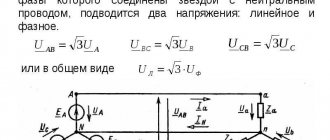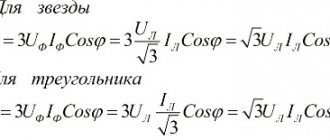What is the difference between a house and a property in an address?
Moreover, in accordance with Art. 549 of the Civil Code of the Russian Federation, under an agreement for the purchase and sale of real estate (real estate sale agreement), the seller undertakes to transfer a land plot, building, structure, apartment or other real estate into the ownership of the buyer. That is, by default, here we are NOT talking about home ownership, which is a COLLECTION of different types of real estate objects. Article 549 refers to a specific piece of real estate; Home ownership is a collective object; it can be called an individually defined object with a big stretch.
homeownership - homeownership, homeownership, homeownership, homeownership, homeownership, homeownership, homeownership, homeownership, homeownership, homeownership, homeownership, homeownership (Source: “Full accentuated paradigm according to A. A. Zaliznyak”) ... Forms of words
There are times in life when the sale of an apartment to one co-owner is vital, but the other fundamentally does not give his consent. This could be simple stubbornness, selfishness, or even revenge. The problem will have to be resolved in court. You can forcibly buy out a share from one of the co-owners, or achieve the allocation of a share in kind. But what will matter here is the size of the purchased share, its significance for the owner, and the technical possibility of allocating it in kind. Citizens often confuse the concept of shares in common property with the established procedure for using such property. For example, three owners own a three-room apartment, 1/3 per person. Each of them occupies one room, mistakenly believing that these rooms are precisely their shares in the common shared property. Actually this is not true. Each of the three owners, if desired, can own and use any of the rooms with the same rights as the other owners. I would like to add that with shared ownership, the right to part of the property is almost always secured on paper, which cannot be said about joint ownership. In addition, from June 2021, the sale of shares requires notarization.
You may like => Benefits for Widows of Combat Veterans in 2021 Latest News
Possession is a type of property right that denotes the actual possession of property. As a rule, this category is inextricably linked with the use and disposal of a thing. The right of ownership is confirmed by documents and can be limited (terminated) only on the basis of a court decision or regulatory act.
The right of ownership allows you to dispose, own and use your property in any legal way. This is a basic definition for a lawyer. However, only the sole owner can relatively freely dispose of what belongs to him. Legislators have provided a number of restrictions for shared and joint ownership. But before we talk about them, we need to find out what is meant by these terms.
Answer: In accordance with paragraph 68 of the Procedure for maintaining the state real estate cadastre, approved by the Order of the Ministry of Economic Development of Russia dated 02/04/2010. No. 42, information about the address of a land plot is entered into the state real estate cadastre on the basis of an act of a state authority or local government authority authorized to assign addresses to land plots.
What's The Difference Between Home And Possession?
Sources of inexhaustible pleasure for taxi drivers, delivery services and all sorts of official and not so official sites that require a postal address during registration, presumably. There should probably be some kind of moral here. Well, what can you say - let's say thank you that the addresses do not include all sorts of quotes and other brackets. Tags: tech, addressing, funny Link What do you think?
- There are no additional nuances when registering in the house.
- Building a house from scratch has no hidden nuances; you just need to follow the standards for the construction of residential buildings.
- No membership fees required.
- Repair of communications and roads is carried out by each owner of each plot independently of each other, which exempts them from the mandatory share contribution.
You may like => Calculation of Pension in the Settlement Zone in the Tula Region
What is the difference between ownership and a home?
Regardless of whether the division was forced or voluntary, in any case the property will cease to be joint. After this, all the rules that apply to shares will apply to him. That is, one of the spouses will be able to sell their part if they wish, and from now on they will have to pay for the house separately.
A cottage is a residential building with one or two floors (in this case, the second should be of the attic type). The classic type of property has only two rooms - back and front, and is intended for a small family. Often the cottage is located in a village and is rarely included within the city limits. Also, the classic look of this property (if it is two-story) has a bedroom located upstairs, and guest rooms and a kitchen on the ground floor.
Therefore, in order to avoid discrepancies when concluding and executing contracts for the purchase/sale of real estate, attention should be paid to the correctness of terms. If ONLY a residential building is for sale, then it is this house and its characteristics that must be indicated in the contract. At the same time, according to Part 2 of Art. 555 of the Civil Code of the Russian Federation, unless otherwise provided by law or a contract for the sale of real estate, the price of a building, structure or other real estate located on a land plot established therein includes the price of the corresponding part of the land plot or the right to it transferred with this real estate. If the homeownership as a whole is being sold, therefore, the purchase and sale agreement must clearly explain which specific individual real estate objects are included in the homeownership. For example, a residential building (letter A, cadastral number no.), bathhouse (letter B, cadastral number no.), etc. Ideally, of course, it would be necessary to divide the total price (cost) of the contract into separate parts corresponding to each of the real estate objects and indicate the total price as their sum. At a minimum, so that there is no confusion later - WHAT EXACTLY, which property was sold. And so that there is no need or possibility for discrepancies in the interpretation of the terms of the real estate purchase and sale agreement.
You may like => Photo Requirements for Military Veterans
The right of disposal provides the opportunity to make legal transactions with property: sell, exchange, donate, inherit, lease or pledge. The right to own and use a land plot Persons who have ownership rights to land can carry out any transactions with it that are not prohibited by law.
ID: 20046196, oh. We have a lot of chaos with addresses. For example, in a distant town there may be at the same time: Lenin Street and Lenin Street Lane. As far as I remember, the property combines buildings, including outbuildings, for example, some kind of transformer booth on the territory of the property can be a building. The body is a more isolated (independent) object. I would be wary if I saw that we are talking about the structure, and not about the building. In short, everything there is very confusing and much defies logic. I can only advise you to Google the query: “how does FIAS work” (federal information address system). I just warn you right away, don’t break your brain.
Martha, thanks for the advice! I opened the cadastral map of the Rosreestr, found this plot, it turned out that it had not even undergone land surveying. There are no borders, there is only land on the map, the house apparently was not registered. In general, some kind of murky scheme, we will look for other options. Thanks again!
· numbering of objects is based on an analysis of address plans. Objects located at the intersection of streets of different categories are assigned an address on a street of a higher category. Objects located at the intersection of streets of equal categories are assigned an address along the street onto which the main façade of the building faces (is designed). The number of these objects is written through a fraction (for example: Energetikov Ave., N 14/12). The numbers of objects located at the beginning and end of streets that are not at an intersection consist of one number.
1998 “On approval of the instructions on conducting accounting of the housing stock in the Russian Federation”, homeownership is a residential building (houses) and the buildings and structures serving it (them), located on a separate plot of land. In a word, home ownership is a complex, recorded under one inventory number and under one address, including a land plot with landscaping elements and other objects of movable and immovable property.
Overhead power lines[ | ]
Overhead power line 500 kV One of the most powerful power lines in the world: "Itat - Ekibastuz - Kokshetau - Chelyabinsk", design voltage 1150 kV.
Supports of the POG-1150 type are visible. Overhead power line
(VL) - a device intended for transmitting or distributing electrical energy through wires located in the open air and attached using traverses (brackets), insulators and fittings to supports or other structures (bridges, overpasses).
VLI
is an overhead line made of insulated wires (SIP).
Composition of VL[ | ]
- Wires
- Traverses
- Insulators
- Armature
- Supports
- Lightning protection cables
- Arresters
- Grounding
- Sectioning devices
- Fiber-optic communication lines (in the form of separate self-supporting cables, or built into a lightning protection cable or power wire)
- Auxiliary equipment for operational needs (high-frequency communication equipment, capacitive power take-off, etc.)
- Marking elements for high-voltage wires and power line supports to ensure aircraft flight safety. The supports are marked with a combination of paints of certain colors, the wires are marked with aviation balloons for marking in the daytime. Illuminated fencing lights are used for marking during the day and at night.
Documents regulating overhead lines[ | ]
| External video files | |
| How it's done | |
| Maintenance of a LIVE HIGH VOLTAGE line | |
The design of overhead lines, its design and construction are regulated by the Rules for the Construction of Electrical Installations (PUE) and Construction Norms and Rules (SNiP).
Classification of overhead lines[ | ]
By type of current[ | ]
- AC overhead line
- DC overhead line
Basically, overhead lines are used to transmit alternating current, and only in certain cases (for example, for connecting power systems, powering contact networks, etc.) are direct current lines used.
150 kV AC power transmission line in the Dnepropetrovsk region Volgograd-Donbass DC power transmission line (Rostov and Volgograd regions)
DC lines have lower losses due to capacitive and inductive components. Several DC power lines were built in the USSR, including:
- Moscow - Kashira (Elba Project, 1951);
- Volgograd - Donbass (1965);
- Ekibastuz - Center (unfinished).
Such lines have not become widespread, mainly due to the need to construct complex end substations with a large amount of auxiliary equipment.
By purpose[ | ]
- Long-distance intersystem overhead lines with a voltage of 500 and above (designed to connect individual power systems).
- Trunk overhead lines with a voltage of 220,330,500 kV (designed to transmit energy from powerful power plants, as well as to connect power systems and combine power plants within power systems - for example, they connect power plants with large hub substations).
- Distribution overhead lines with voltages of 110,150 and 220 kV (designed for power supply to enterprises and large settlements - connecting central substations with deep-entry substations of cities).
- Overhead lines with a voltage of 35 kV are used primarily for power supply to agricultural (suburban) consumers.
- Overhead lines 20 kV and below, supplying electricity to consumers. Modern urban distribution networks are usually operated at a voltage of 10 kV.
By voltage[ | ]
Reinforced concrete power line support 220/380 V with porcelain linear insulators for 10 kV power lines. This voltage class is widely represented in the post-Soviet space The upper part of a 10 kV power line support with glass linear insulators The intersection of 35 and 150 kV power lines The crossing of a 330 kV power line across the Dnieper Power line support in the form of a multifaceted bent post (MGS), Canada A 150 kV power line in the Dneproenergo power line 750 kV, three-post anchor-corner support Corona on phases of 750 kV power lines 750 kV power lines, Nabla type support
- Overhead lines up to 1000 V (overhead lines of low voltage class)
- Overhead lines above 1000 V Overhead lines 1-35 kV (overhead lines of medium voltage class)
- Overhead lines 110-220 kV (overhead lines of high voltage class)
- Overhead lines 330–750 kV (overhead lines of ultra-high voltage class)
- Overhead lines above 750 kV (overhead lines of ultra-high voltage class)
These groups differ significantly, mainly in terms of design conditions and structures.
In the CIS networks of general purpose alternating current 50 Hz, according to GOST 721-77, the following rated phase-to-phase voltages should be used: 380 V; (6)[2], 10, 20, 35, 110, 220, 330, 500, 750 and 1150 kV. There may also be networks built according to outdated standards with nominal phase-to-phase voltages: 220 volts, 3, 15[3] and 150 kilovolts.
The highest voltage power line in the world is the Ekibastuz - Kokshetau line, rated voltage - 1150 kV. However, the line is currently operated at half the voltage - 500 kV. In the 1970s, a 2200 kV overhead line project was developed in the Soviet Union to transport energy from KATEK power plants to the European part of the country, but for a number of reasons (mainly technical and technological) it was not implemented.
The rated voltage for DC lines is not regulated; the most commonly used voltages are 150, 400 (Vyborg Substation - Finland) and 800 kV.
Other voltage classes can be used in special networks, mainly for traction networks of railways (27.5 kV, 50 Hz AC and 3.3 kV DC), metro (825 V DC), trams and trolleybuses (600 VDC).
According to the operating mode of neutrals in electrical installations[ | ]
- Three-phase networks with ungrounded
(
isolated
) neutrals (the neutral is not connected to the grounding device or is connected to it through devices with high resistance). In the CIS, this neutral mode is used in networks with a voltage of 3-35 kV with low currents of single-phase ground faults. - Three-phase networks with resonantly grounded
(
compensated
) neutrals (the neutral bus is connected to grounding through inductance). In the CIS it is used in networks with a voltage of 3-35 kV with low currents of single-phase ground faults. - Three-phase networks with effectively grounded
neutrals (high and ultra-high voltage networks, the neutrals of which are connected to the ground directly or through a small active resistance). In Russia, these are networks with voltages of 110, 150 and partially 220 kV, which use transformers (autotransformers require mandatory solid grounding of the neutral). - Networks with a solidly grounded
neutral (the neutral of a transformer or generator is connected to a grounding device directly or through low resistance). These include networks with voltages less than 1 kV, as well as networks with voltages of 220 kV and higher.
According to the operating mode depending on the mechanical condition[ | ]
- The overhead line is in normal operation (the wires and cables are not broken).
- Overhead lines in emergency operation (in case of complete or partial breakage of wires and cables).
- Overhead lines of installation operating mode (during installation of supports, wires and cables).
Basic elements of overhead lines[ | ]
- Route
- the position of the overhead line axis on the earth's surface. - Pickets
(PCs) are segments into which the route is divided; the length of the pickets depends on the rated voltage of the overhead line and the type of terrain. - The zero picket sign
marks the beginning of the route. - The center sign
on the route of the overhead line under construction indicates the center of the support location. - Production picketing
- installation of picket and center signs on the route in accordance with the list of support placement. - The foundation of a support
is a structure embedded in the ground or resting on it and transferring to it the load from the support, insulators, wires (cables) and from external influences (ice, wind). - The base of the foundation
is the soil of the lower part of the pit, which carries the load. - Span
(span length) is the distance between the centers of two supports on which the wires are suspended.
There is an intermediate
span (between two adjacent intermediate supports) and
an anchor
span (between anchor supports).
A transition span
is a span crossing any structure or natural obstacle (river, ravine). - The angle of rotation of the line
is the angle α between the directions of the overhead line route in adjacent spans (before and after the turn). - Sag
is the vertical distance between the lowest point of the wire in the span and the straight line connecting the points of its attachment to the supports. - Wire size
is the vertical distance from the wire in the span to the engineering structures crossed by the route, the surface of the earth or water. - A loop
(
loop
) is a piece of wire that connects the tensioned wires of adjacent anchor spans on an anchor support.
Installation of overhead power lines[ | ]
Installation of power lines is carried out using the “tension” method. This is especially true in the case of difficult terrain. When selecting equipment for installing power lines, it is necessary to take into account the number of wires in a phase, their diameter and the maximum distance between power line supports.









